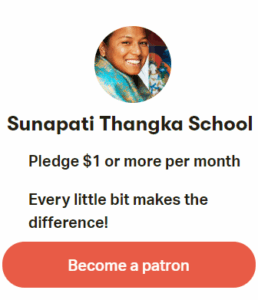Buddhist Art
Our Thangka on Display at The British Library Exhibition in London
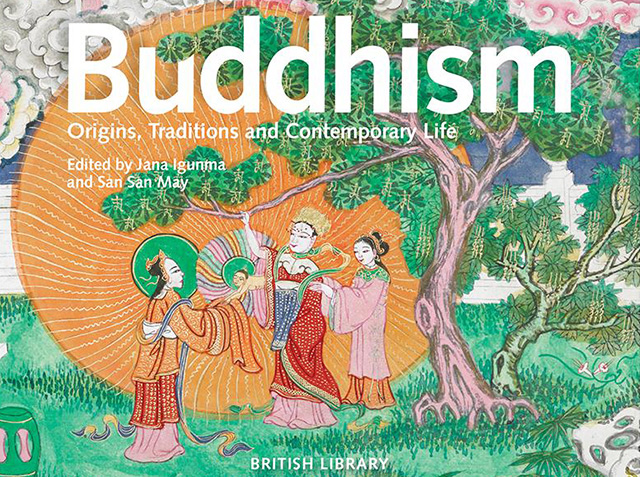
Since the first seven steps that prince Siddhartha Gautama walked right after his birth in a garden in Lumbini to his death in Kushinagar, Buddha’s life story and teachings inspired cultures all across Asia and Buddhism became one of the world’s biggest religions. The different approaches to the Buddhist philosophy in different countries created a rich diversity of traditions and lineages that vary tremendously from region to region.
Today the Buddhist principles of compassion and tolerance, the practice of meditation and mindfulness and the concept of enlightenment have crossed over into Western culture acquiring a global scale. However not so many people are aware of the vaste diversity of the cultural footprints that Buddha’s journey left around the world. The current exhibition on Buddhism at the British Library in London wants to be a showcase of this journey.
Among delicate scriptures, illustrations painted on tree barks or leaves, silk scrolls of sutras and ancient objects, the show displays more then 120 artifacts from 20 countries and it covers a time span of 2,000 years.
We are happy and honored to announce that among these beautiful artworks you can admire the thangka painting of the Wheel of life painted by our master artist Buddha Lama and adorned with a silk brocade created by our dear tailor Susmi Tamang.
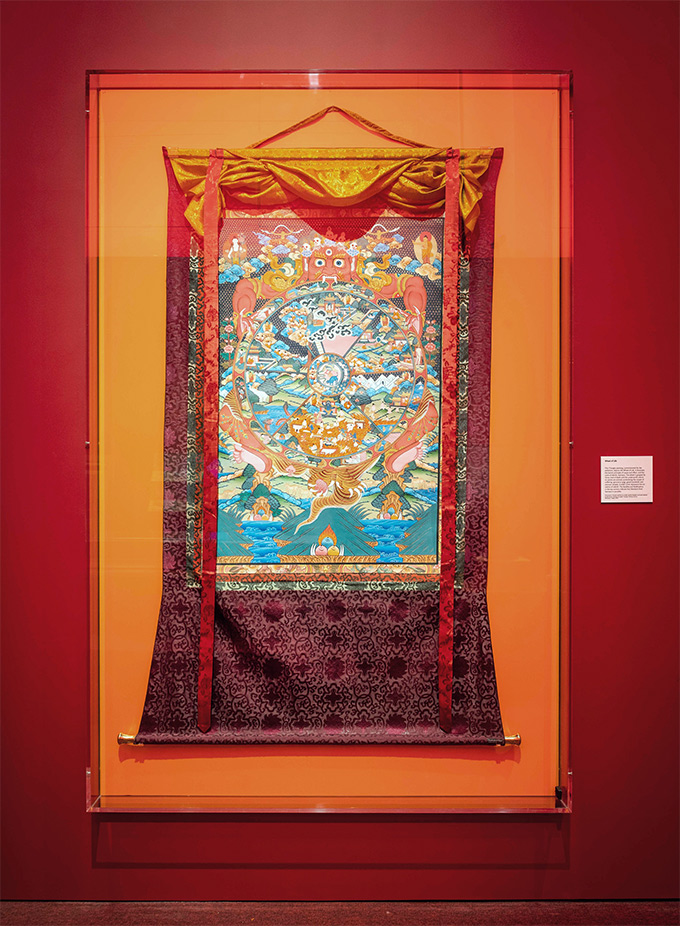
The British Library dedicated an entire wall to the thangka and it is on display until the 23 of February 2020 as centerpiece of the exhibition!
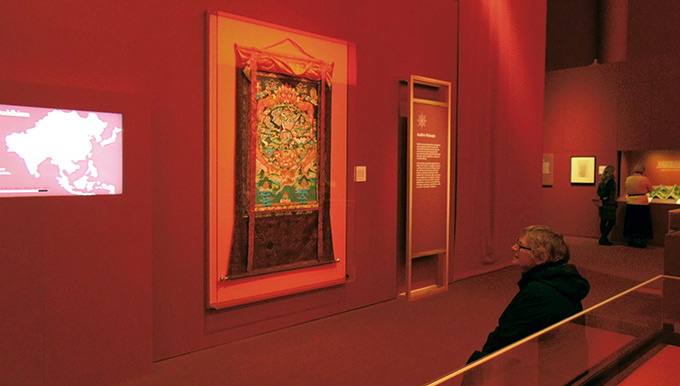
Both master Lama and Mrs. Tamang, our thangka school and all our team is deeply grateful to the lead curator of the exhibition Jana Igunma for commissioning the thangka, for her passion, kindness and care. Thank you also to all the staff of the British Library for such an amazing opportunity and for the generous contribution to the artists and artisans of our community.
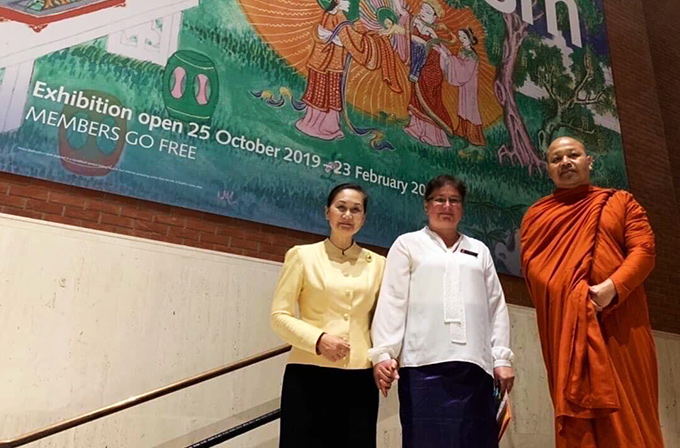
Sadly it’s not possible for us to attend to this beautiful event however we are all following with excitement the articles, the twits and the photos that many visitors are posting on social media. Here some images:
The British Library also planned a series of events during the exhibition. People that are interested in the Buddhist teachings and practices can join different courses and classes on Mindfulness, Buddhist art, meditation, Zen calligraphy and much more.
You can find more info and the schedule of these events at the British Library official website.
If you are in London or you plan to visit the city during the coming holidays don’t miss the exhibition, it is open until 23 of February 2020.
More info at: British Library Buddhism Event.
Email: customer-services@bl.uk
Contact number: +44 (0)1937 546060.
They offer 10% discount on groups of 10+ people or if you book online.
Namaste.
The Thangkas of The Tibetan Medicine
Created between 1687 and 1703, these thangka paintings were commissioned by the fifth Dalai Lama’s regent, Desi Sangye Gyatso, who stepped in as interim ruler of Tibet after the Dalai Lama died in 1682.
The paintings constitute the charts of The Blue Beryl, a text written by Gyatso as commentary of the Four Tantras, the fundamental text of Tibetan medicine.
The main reason that moved Gyatso to create this illustrations was to avoid confusion when interpreting old texts.
Gyatso placed great value on the accuracy of the illustrations depicting such things as the use of omens and dreams for making diagnoses, hundreds of medicinal herbs and medical instruments, and fabulous diagrams of human anatomy.
As stated by the International Academy for Traditional Tibetan Medicine (IATTM) “one of the unique features of Traditional Tibetan Medicine is that it contains a comprehensive philosophy, cosmology, and system of subtle anatomy with associated spiritual practices”.
Today these Thangkas constitute a fundamental piece of educational art that interweave Tibetan Buddhist traditions with centuries-old medical knowledge.
The first painting occupies a privileged place among the others which, in a certain sense, derive from it. It represents the celestial city of the Buddha Bhaisajyaguru, Master of Remedies “Surdasana”. The city is surrounded by four “mountains”. Further more it is square with the palace at its center. The palace, like the whole locality, is an emanation of Buddha Bhaisajyaguru. Its plan evokes a Mandala, with its square enclosure and its four gates oriented in the cardinal directions.
The thangkas not only depict the Buddhist background of Tibetan medicine but also the diagnostic schemes of pulse and urine analysis, picturesque representations of dietary and behavioral advice for treating illnesses, as well as anatomical knowledge,charts for moxabustion, and the elaborate “materia medica” of Tibetan pharmacology.
In fact Twenty-one Thangkas of the original series are devoted to more large human figures illustrating anatomical structures.
The first fifteen compositions have a top register. The registers contain the four main sequential topics relating to the origin myths and state narrative on the Tibetan History of Medicine of the late 17th century.
There are four main sequential topics contained in the registers:
– Medicine Buddha and early Indian Gods and Rishis.
– The Lineage of the Four Medical Tantras.
– The Yutog Nyingtig Lineage.
– The Deities and Protectors of the Yutog Nyingtig.
Follow traditionalartofnepal.com on WordPress.com
Raktayamari Thangka: A Closer Look at the Thangka Worth $45 Million
Overlook
Widely recognised as one of the most important Asian works of art and one of the world’s great textile treasures, this Thangka was recently bought for $45 million.
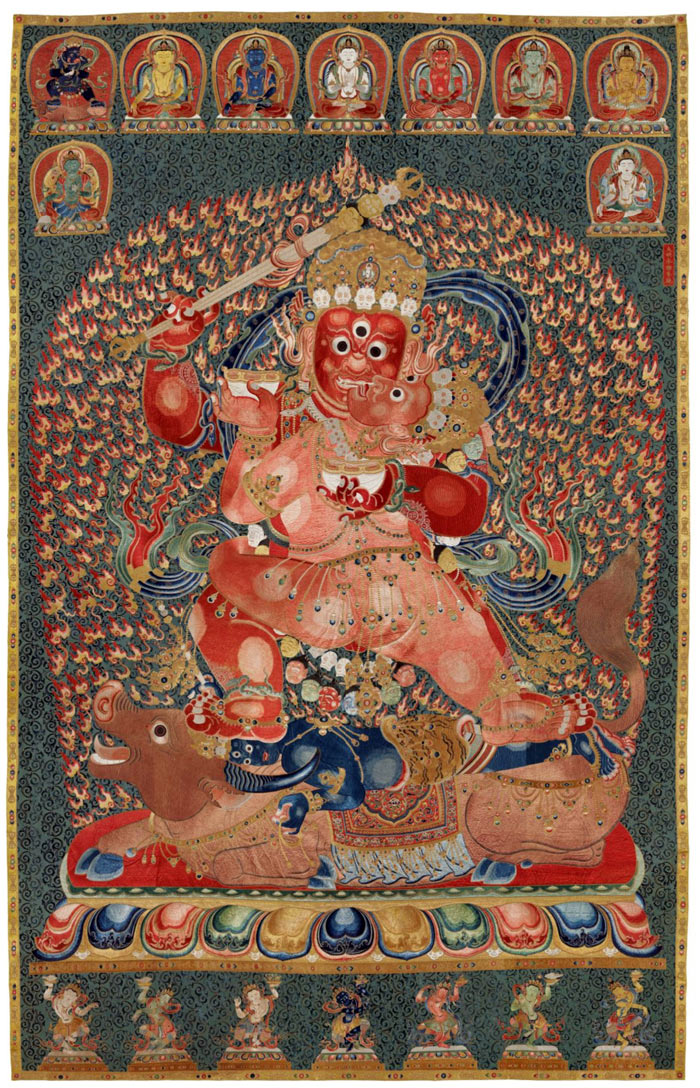
From a distance it looks like a painting, however this masterpiece is not made by brush strokes but millions of carefully placed stitches of floss silk in a dazzling array of colors, covering every square inch of the surface of the textile that measure 132 x 84 inches (335.3 x 213.4 cm.).
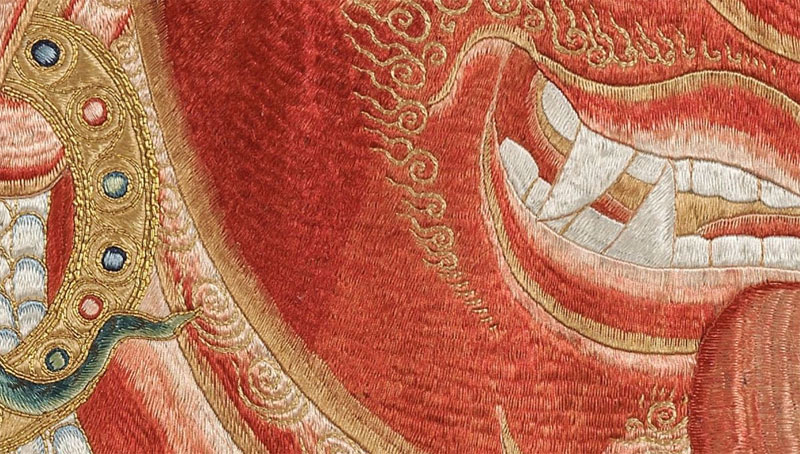
The Thangka depicts the majestic Raktayamari, the red Conqueror of Death, standing in yab-yum embracing his consort, Vajravetali.
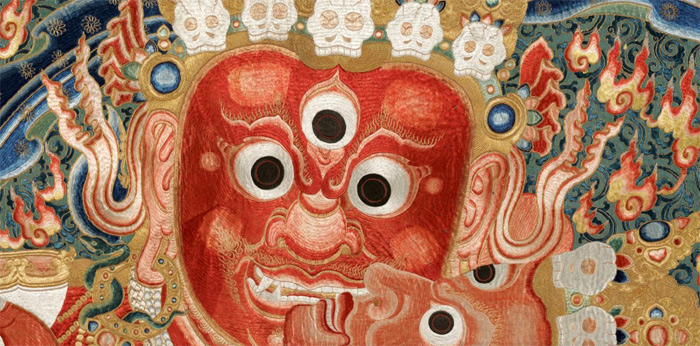
Raktayamari is an important deity of Anuttarayoga-Tantra in Vajrayana Buddhism, and one of the three Yamari forms of Bodhisattva Manjusri (the other two being Vajrabhairava and Krishna-Yamari) revered by various Tibetan sects.
The highlights on the torsos and limbs of Raktayamari and Vajravetali, to denote the musculature, are some of the most common motifs in Nepalese-Tibetan paintings and a notable characteristic of figures in classical Tibetan art.
Highlights and Symbolism
Every aspect of the form of Yamari and the consort Vajra Vetali have symbolic and coded meaning.
The red body color represents the desire to overcome all sufferings and place all beings in the state of enlightenment. The weapon that Raktayamari holds subdues the afflictions (maras).
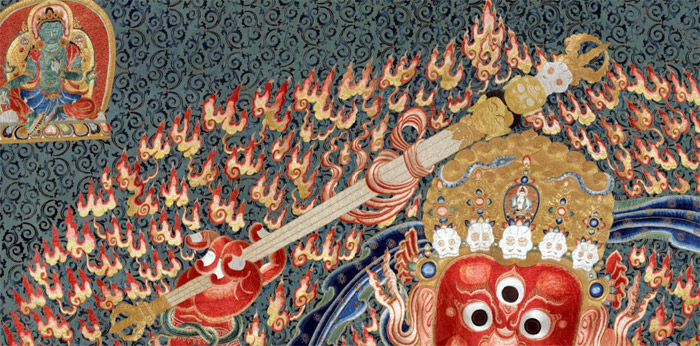
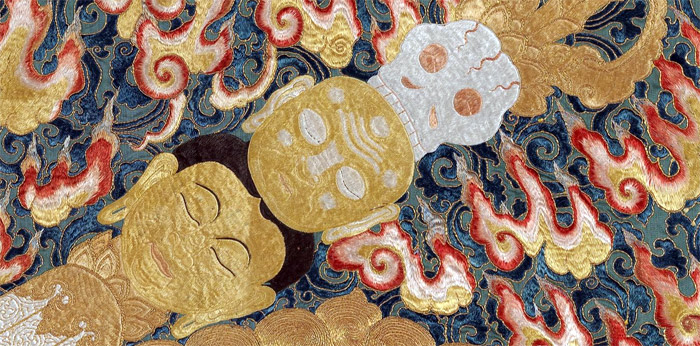
The left hand holds a cup made by ancient Lama’s skull and containing the essence of the four maras transformed.
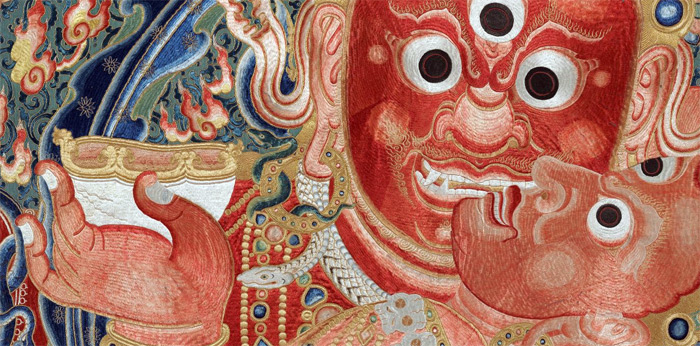
The three round eyes express compassion for all beings in the three times of past, present and future as well as the three watches of the day and three watches of the night.
The orange and red hair is to symbolize the increasing qualities of the Buddha and the aspects of the Mahayana Five Paths.
The crown of five dry skulls symbolizes the five poisons transformed into the five wisdoms.
The necklace of fifty fresh heads represents the vowels and consonants of the Sanskrit language.
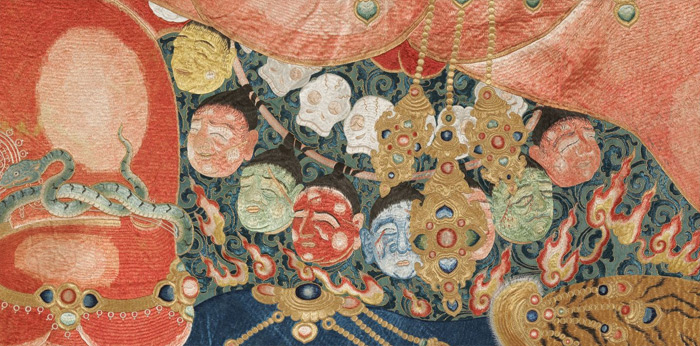
The eight snakes represent the subjugation of various obstacles and the accomplishment of skillful activities.
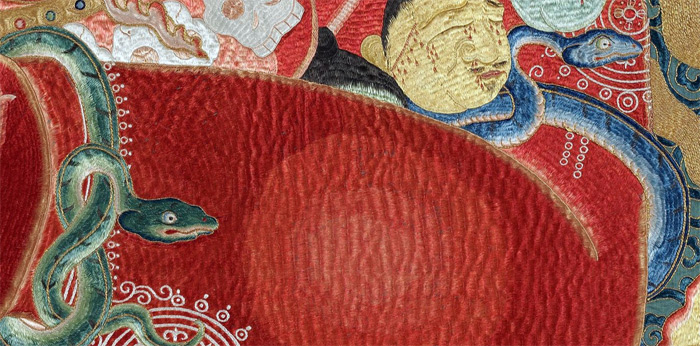
The locked couple is trampling on the blue corpse of Yama, the Lord of death, wearing a tiger skin and crown, lying on the back of their mount, a brown buffalo recumbent on a multi-coloured lotus base.
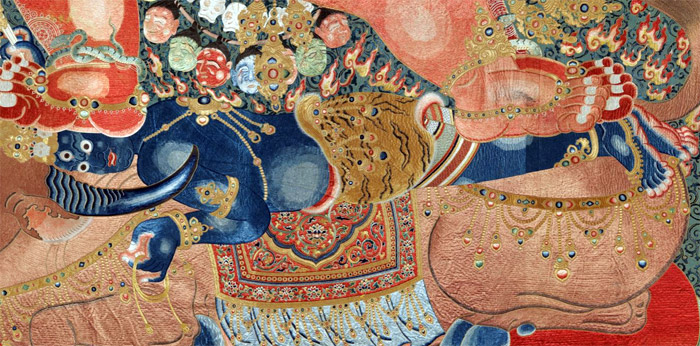
All below two rows of buddhas and bodhisattvas seated on lotus bases, the upper including Heruka Vajrabhairava on the far left and Manjusri on the far right, flanking the five Dhyani Buddhas.

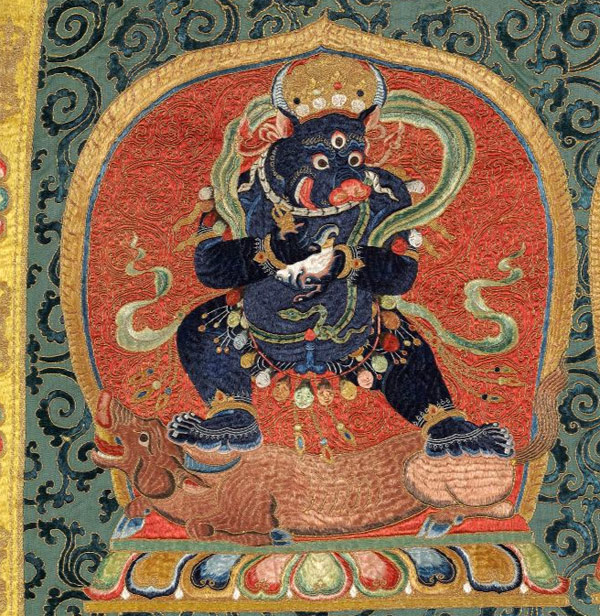
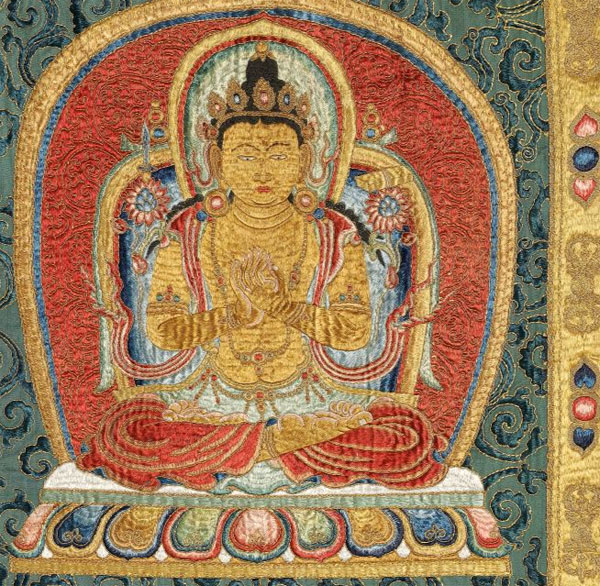
Below this row of deities are two Taras – Green Tara on the left, and White Tara on the right.
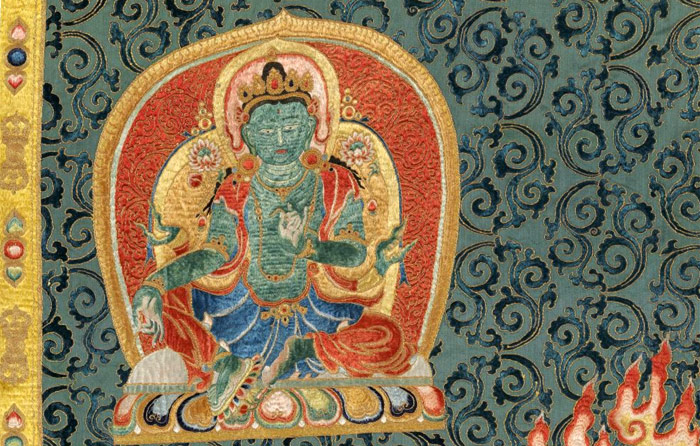
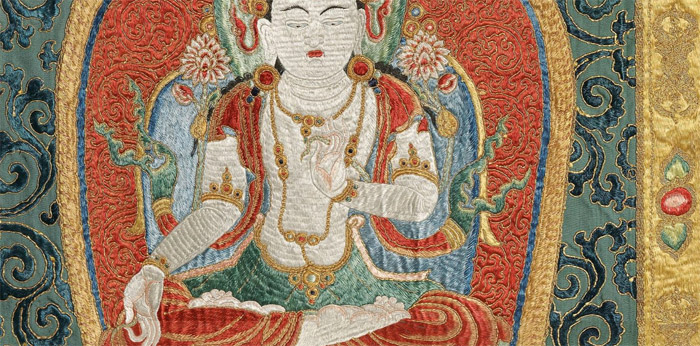
In the lower panel is a row of seven offering goddesses dancing on lotus bases and holding aloft dishes as offerings below the couple.
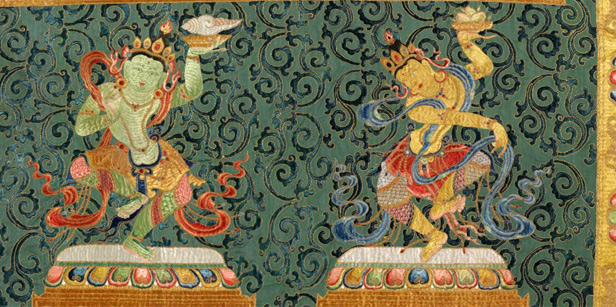
Meaning of the artwork
The metaphor for Rakta Yamari is ‘death.’ The name means the ‘Red Killer of Death.’
In this symbolic meaning the idea of death refers directly to the suffering and unhappiness in the world as described in Buddhist philosophy.
The general appearance of the deity, number of faces, arms, ornaments, decorations and attributes are all part of a mnemonic device (memory system) that incorporates the most essential of Buddhist principles and core teachings into a single object.
The one face represents the embodiment of the wisdom of all Buddhas as having one taste, or flavor, ultimate truth. The red body color represents the desire to overcome all “maras” and place all beings in the state of enlightenment.
Bibilography
Henss, Michael. ‘The Woven Image: Tibeto-Chinese Textile Thangkas of the Yuan and Early Ming Dynatsies’, Orientations, November 1997.
Himalayan Art Resources. Rakta Yamari Main Page. http://www.himalayanart.org/search/set.cfm?setID=349. Jeff Watt, 2-2005.
Himalayan Art Resources. Rakta Yamari Textile. HAR no. 57041. http://www.himalayanart.org/image.cfm/57041.html.
Raktayamari-tantraraja-nama. Gshin rje’i gshed dmar po zhes bya ba’i rgyud kyi rgyal po [TBRC w25383, w25384].
Reynolds, Valrae, ‘Buddhist Silk Textiles: Evidence for Patronage and Ritual Practice in China and Tibet.’ Orientations, April 1997.
George Roerich (trans.), Biography of Dharmasvamin, A Tibetan Monk Pilgrim. Patna: K.P. Jayaswal Research Institute, 1959.
George Roerich (trans.), The Blue Annals. Delhi: Motilal Banarsidas, 1996, 2nd ed.
Follow traditionalartofnepal.com on WordPress.com
How To Order
- Browse our catalog and choose your favorite design.
- Select your preferred size and quality to check the price.
- Click on “Product Inquiry” to send us a message and we will check if we the artwork is immediately available. If not we will make it for you.
- Use the cart page to calculate the shipping cost by selecting your country.
- Once we receive your order we will start creating the artwork according to your preferences and provide you with updates and images upon your request.
We strive to ensure a smooth shopping experience with our assistance. We also welcome commissions of custom designs of thangkas, masks and mandalas.
Shipping and Payments
We offer trusted shipping options to ensure your purchases arrive in perfect condition, and delivered in 5 to 10 working days worldwide. We accept PayPal, debit/credit cards and bank wire transfer services.
About Our Community
We live in Changunarayan, a UNESCO heritage site located on a forested hill overlooking Bhaktapur and the Kathmandu valley. You are welcome to visit our art school and meet our community of artists and artisans.
Learn More About Our Thangka School And Workshops
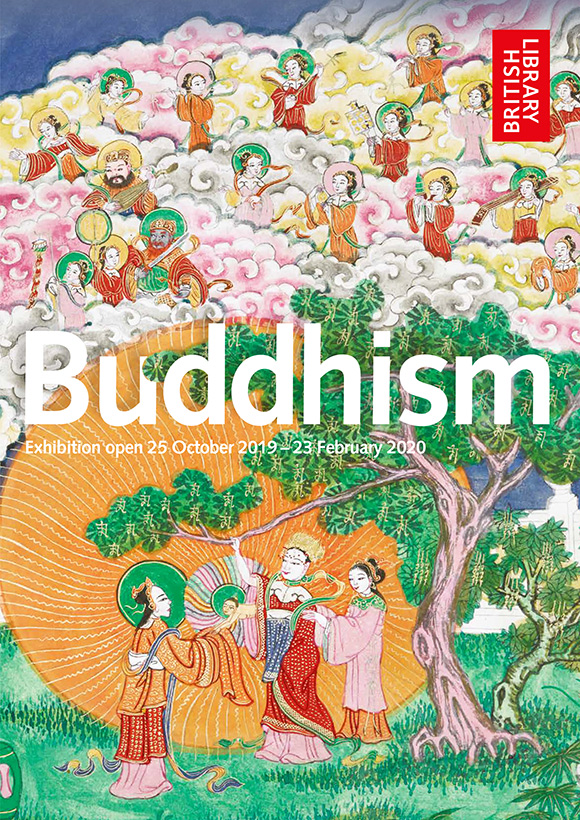
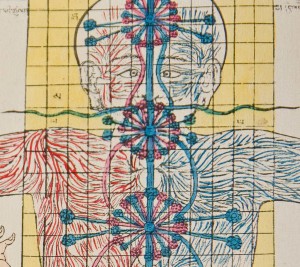
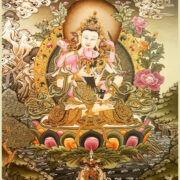 Vajrasattva
Vajrasattva 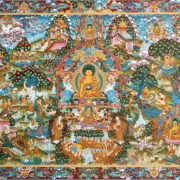 Life of Buddha Master Thangka
Life of Buddha Master Thangka 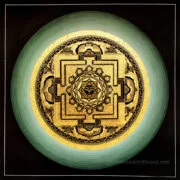 Wisdom Eyes Mandala
Wisdom Eyes Mandala 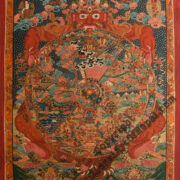 Wheel of Life 2
Wheel of Life 2 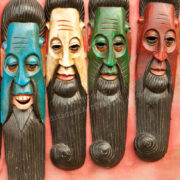 Sadhu Baba Masks
Sadhu Baba Masks 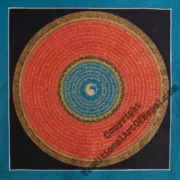 Triple Yin-Yang Mandala
Triple Yin-Yang Mandala 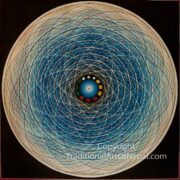 Universe Om Mandala
Universe Om Mandala 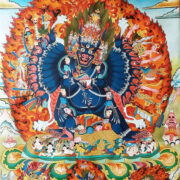 Vajrabhairava
Vajrabhairava 